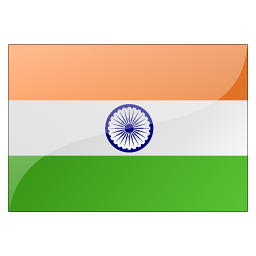



Welcome to the lush Western Ghats, some of the most precious heat relief in India. Rising like an impassable bulwark of evergreen and deciduous tangle, from north of Mumbai to the tip of Tamil Nadu, the World Heritage–listed Ghats (with an average elevation of 915m) contain 27% of India’s flowering plant species and an incredible array of endemic wildlife. In Tamil Nadu they rise to over 2000m in the Palani Hills around Kodaikanal and the Nilgiris around Ooty. British influence lingers a little stronger up in these hills, where colonialists built 'hill stations' to escape the sweltering plains and covered slopes in neatly trimmed tea plantations. It’s not just the air and (relative) lack of pollution that’s refreshing – there’s a certain acceptance of quirkiness and eccentricity here. Expect organic farms, handlebar-moustached trekking guides and leopard-print earmuffs.

Du kanske har sett bilder på överfulla indiska tåg där passagerarna lutar sig ut genom dörrarna och sitter på taket. Lugn, så illa är det inte. En indisk tågresa är betydligt mer civiliserad och bekvämare än så. I alla fall om du bokar plats i förväg. Vagabonds Indienexpert förklarar vad du bör veta innan du kliver ombord.

The union territory of Puducherry (formerly Pondicherry; generally known as ‘Pondy’) was under French colonial rule until 1954. Some people here still speak French (and English with French accents). The internationally famous Sri Aurobindo Ashram and its offshoot just north of town, Auroville, draw large numbers of spiritually-minded visitors. Thus Pondy’s vibe: less faded colonial-era ville, more bohemian-chic, New Age–meets–Old World hang-out on the international travel trail.

A thriving, vibrant metropolis, Pune is a centre of academia and business that epitomises ‘New India’ with its baffling mix of capitalism and spiritualism (ancient and modern). It’s also globally famous, or notorious, for an ashram, the Osho International Meditation Resort, founded by the late guru Bhagwan Shree Rajneesh.

Located on the banks of the holy Godavari River, Nashik (or Nasik) gets its name from the episode in the Ramayana where Lakshmana, Rama’s brother, hacked off the nasika (nose) of Ravana’s sister. Today this large provincial city’s old quarter has some intriguing wooden architecture, interesting temples that reference the Hindu epic and some huge bathing ghats. The city is noticeably cleaner, better maintained and greener than many Indian cities of its size.

When Swiss architect Le Corbusier was commissioned with the job of designing Chandigarh from scratch in 1950, he conceived a people-oriented city of sweeping boulevards, lakes, gardens and grand civic buildings, executed in his favourite material: reinforced concrete. Seventy years on and the parks, monuments and civic squares are all still here, albeit somewhat aged.

The magical allure of the Taj Mahal draws tourists to Agra like moths to a wondrous flame. And despite the hype, it’s every bit as good as you’ve heard. But the Taj is not a stand-alone attraction. The legacy of the Mughal empire has left a magnificent fort and a liberal sprinkling of fascinating tombs and mausoleums, and there’s also fun to be had in the bustling chowks (marketplaces).

The gateway to the Northeast, and the largest and most cosmopolitan city in the region, Guwahati serves as the starting point for many itineraries. Extending along the south bank of the mighty Brahmaputra, in the older areas near the river you'll start to feel the character and local flavour that lingers amid the ponds, palm trees, temples, single-storey traditional houses and colonial-era mansions. Only a few stretches of the riverbank are accessible in the central areas – but when you reach them, those Brahmaputra views never disappoint!

Myllrande marknader, minglande Bollywoodstjärnor, skyskrapor, hindutempel, coola kaféer och världens bästa gatumat. Följ med till SVT-reportern Malin Mendels Bombay.

A stunning introduction to southern India, Karnataka is a prosperous, compelling state loaded with a winning blend of urban cool, glittering palaces, national parks, ancient ruins, beaches, yoga centres and legendary travelers' hang-outs.